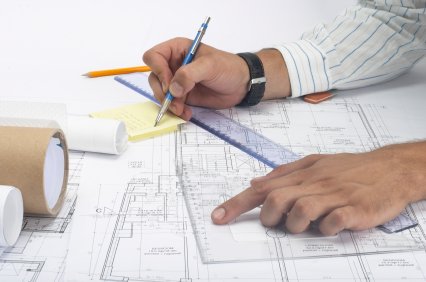Architect Rules for Designing Classic Interiors
Architect Rules for Designing Classic Interiors
Blog Article
Recognizing the Diverse Job Paths Available for Aspiring Architect
As an aspiring Architect, you have a globe of profession paths waiting for you. Whether you're attracted to conventional architecture or the nuances of lasting design, there's a niche that aligns with your passions.
Typical Style: Designing Structures and Structures
Conventional style concentrates on creating buildings and structures that mix functionality with visual allure. As you discover this area, you'll appreciate the elaborate equilibrium in between form and function. You'll find out to attract ideas from historic designs, integrating aspects like balance, products, and workmanship. Your layouts can reflect cultural heritage, showcasing local traditions while satisfying modern-day needs.
You'll develop abilities in drafting, model-making, and website analysis, permitting you to envision and connect your concepts properly. Involving with customers, you'll require to comprehend their vision and equate it right into viable layouts.
Moreover, developing codes and sustainability practices are vital in your job, ensuring your structures are secure and eco-friendly. As you grow in your career, you'll find chances in domestic, commercial, or even repair jobs, each offering unique obstacles. Accepting standard design leads the way for a satisfying career that pays homage to the past while forming the future.
Urban Planning: Forming Neighborhoods and Public Spaces
As a hopeful Architect, you can play an important duty as a metropolitan planner, transforming just how areas connect and work. By employing neighborhood involvement techniques, you'll ensure that homeowners have a voice fit their setting. Plus, integrating sustainable layout principles will certainly help produce spaces that not just meet today's requirements yet also shield the future.
Duty of Urban Planners
While numerous could assume of architects as the single dreamers behind structures, city organizers play an essential role in forming the more comprehensive landscape of communities and public spaces. By collaborating with various stakeholders, you'll help design parks, transportation systems, and domestic areas that advertise social communication and access. Your proficiency in spatial style and community characteristics permits you to imagine future growth while protecting cultural heritage.
Neighborhood Engagement Approaches
Reliable community interaction methods are essential for urban coordinators to assure that the voices of residents are heard and valued in the preparation process. To foster significant discussion, you need to focus on open discussion forums and workshops where community members can express their ideas and worries. By proactively paying attention and integrating comments, you'll create rooms that show the area's demands, inevitably leading to more successful and lasting city settings.
Lasting Design Principles
When making city spaces, integrating sustainable layout principles is essential for developing settings that flourish both ecologically and socially. Take into consideration incorporating environment-friendly areas, like parks and yards, to boost biodiversity and enhance air quality.
Designing with water conservation in mind is additionally essential-- think concerning rainfall gardens and absorptive surfaces to take care of stormwater. Entailing area members throughout the planning procedure guarantees that the spaces you create fulfill their requirements and motivate social communication. By accepting these concepts, you'll add to lively, sustainable city landscapes that benefit every person.

Landscape Style: Producing Sustainable Outdoor Settings
As you explore landscape architecture, you'll uncover necessary style principles that produce lovely and practical outside spaces. Lasting methods play an essential duty in making certain these atmospheres prosper while lessening environmental influence. Plus, you'll locate a range of job possibilities that enable you to make a genuine distinction in just how individuals interact with nature.
Layout Principles in Landscape
Understanding design principles in landscape design is crucial for developing lasting exterior settings that harmonize with nature. You'll require to contemplate elements like scale, proportion, and balance to guarantee your layouts really feel natural and welcoming. Furthermore, pay interest to seasonal modifications, making with products that enhance the environments year-round.
Lasting Practices Introduction
Sustainable practices in landscape style not just concentrate on appearances yet likewise prioritize ecological wellness and resource conservation. By incorporating indigenous plants, you improve biodiversity and decrease the need for chemical plant foods and pesticides. Executing efficient watering systems assists conserve water and lessens runoff, protecting neighboring environments. You can create spaces that advertise soil health, such as making use of organic materials and practicing permaculture principles. Additionally, including eco-friendly infrastructure, like rainfall gardens and permeable sidewalks, help in stormwater management and lowers metropolitan warmth. When you produce outdoor settings with sustainability in mind, you contribute to a much healthier planet and give areas that promote community connection. Eventually, these practices assure your styles profit both individuals and the setting for many years ahead.
Profession Opportunities Expedition
With a strong foundation in lasting methods, landscape architecture offers a selection of occupation courses that allow you to make a purposeful influence on the atmosphere. Urban planners frequently collaborate with landscape designers to create environment-friendly areas in urban setups, improving city livability. If you're enthusiastic about education, think about coming to be a landscape architecture teacher, motivating future generations.
Sustainable Layout: Concentrating On Eco-Friendly Practices
As you explore your occupation in style, embracing environment-friendly methods can set you apart in an affordable field. Lasting style focuses on developing buildings that reduce ecological influence while improving passenger health. By integrating sustainable materials, energy-efficient systems, and lasting structure methods, you'll add to a greener future.
Beginning by getting expertise of environment-friendly qualifications like LEED or BREEAM, which can strengthen your credentials. Take into consideration how natural light, air flow, and thermal performance can enhance design. Collaborate with engineers and environmental professionals to innovate options that lower waste and conserve resources.
Do not neglect the value of neighborhood involvement-- engaging local stakeholders can inspire layouts that balance with the atmosphere. As customers increasingly focus on sustainability, your experience in environment-friendly practices will not just bring in jobs yet also fulfill your interest for responsible architecture. Embrace this vital aspect of the occupation, and see your profession thrive.
Historic Conservation: Safeguarding and Bring Back Social Heritage
While you begin on your building journey, consider the vital role of historic conservation in keeping our cultural heritage. This field focuses on the security and repair of significant buildings, websites, and structures that tell the tales of our past. By taking part in historical preservation, you'll help guard the architectural heritage that forms neighborhood identification.
As a historical preservation Architect, you'll examine historic significance and assess the problem of structures. You'll function carefully with conservationists and chroniclers to ensure genuine repair techniques are employed. This job path allows you to mix creativity with research study, enabling you to design remedies that appreciate original products and workmanship.
Your job not just contributes to sustainability by recycling existing structures however additionally promotes a feeling of satisfaction within neighborhoods. Welcoming this path will certainly assist you become a guardian of history, maintaining the stories and visual appeals that improve our lives.
Interior Design: Enhancing Indoor Spaces
Historical preservation and interior style both share a commitment to improving the built atmosphere, her response yet they focus on different elements. While historic preservation highlights keeping a structure's historic and social value, interior design absolutely nos in on optimizing indoor areas for capability and visual appeals.
As a hopeful Architect, pop over to this web-site you'll locate that interior style allows you to blend imagination with technological abilities. You'll design spaces that not just look excellent yet additionally promote comfort and efficiency. This field includes recognizing just how light, shade, and products interact within a space, affecting state of mind and functionality.
You'll deal with different tasks, from household homes to commercial offices, guaranteeing that each environment meets the needs of its passengers. By prioritizing individual experience, you can transform interiors into practical and inspiring rooms, making a substantial impact on exactly how people communicate with their environments. Embrace the opportunity to boost indoor environments and form the means people function and live.
Industrial Style: Combining Performance With Aesthetics
Industrial design plays an essential function in producing items that perfectly mix visual appeals with performance, ensuring that what you make use of daily is not only aesthetically enticing however also practical. As a hopeful Architect, you can involve yourself in this area, concentrating on developing everything from furnishings to consumer electronics. Your job includes understanding customer requirements, products, and producing processes, permitting you to produce cutting-edge options that enhance everyday experiences.
In industrial design, you'll typically collaborate with designers, manufacturers, and marketing experts, guaranteeing that your layouts are not only stunning yet also viable. You'll learn to balance kind and feature, prioritizing use without giving up style. By refining your abilities in laying out, 3D modeling, and prototyping, you'll be fully equipped to bring your concepts to life. This career path uses a vibrant environment where creativity satisfies practicality, making it a fulfilling selection for architects interested in shaping the products of tomorrow.
Often Asked Inquiries
What Educational Certifications Do I Required to End Up Being an Architect?
To come to be an engineer, you'll need a specialist level in architecture, normally a Bachelor's or Master's. In addition, you'll have to complete an internship and pass the Architect Enrollment Evaluation to exercise legitimately.
Exist Accreditation Requirements for Various Architectural Career Paths?
Yes, there're accreditation needs for different building paths. Architect. You'll need his response to pass tests, full internships, and sometimes seek specialized training, depending upon your chosen focus, like landscape architecture, city design, or historical preservation
What Software Program Abilities Are Necessary for Architects Today?

Just How Can I Gain Practical Experience While Examining Architecture?
You can obtain functional experience by interning at architectural firms, joining design competitions, offering for neighborhood projects, or teaming up with schoolmates on real-world tasks. These opportunities boost your skills and construct important links in the market.
What Job Opportunities Exist Outdoors Traditional Style Firms?
You can explore different job possibilities outside standard architecture companies, like city planning, interior decoration, landscape style, building administration, property advancement, or perhaps roles in sustainability consulting. Each deals special difficulties and rewards.
Whether you're drawn to traditional design or the nuances of lasting layout, there's a specific niche that straightens with your passions.When making urban areas, including sustainable design principles is critical for producing settings that thrive both ecologically and socially.As you check out landscape design, you'll uncover essential layout principles that create useful and gorgeous outside rooms.Understanding design principles in landscape design is vital for developing lasting outdoor settings that harmonize with nature.In industrial design, you'll frequently work together with marketing experts, manufacturers, and designers, ensuring that your designs are not just gorgeous yet also viable.
Report this page